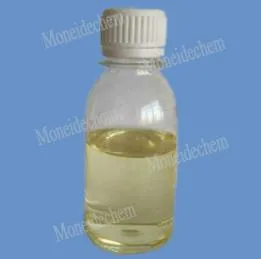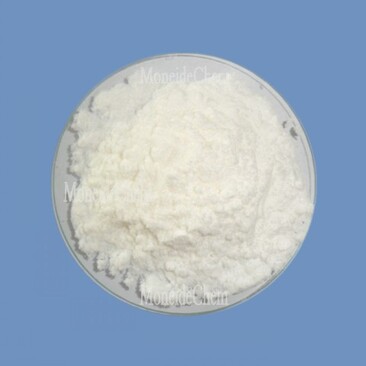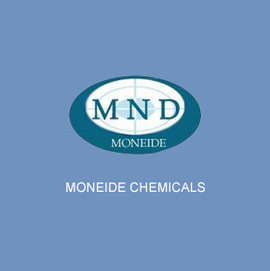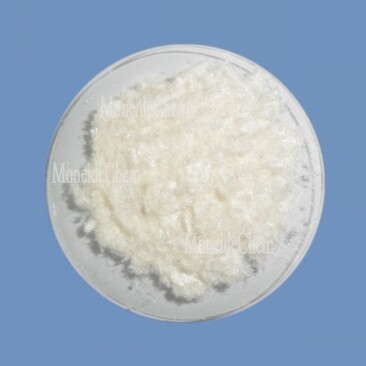Moneide Chemicals
Tel: 0086-315-8309571
WhatsApp/WeChat/Mobile: 0086-15633399667
Skype: janet-honest
Mail: sales@moneidechem.com
Address: 2-7-523 Jidong Building Materials Commercial Center, Tangshan, Hebei 064000 China
Exploring Electroplating Processes: Acidic and Alkaline Systems
- Time of issue:5 сар . 16, 2025 13:59
(Summary description)Tangshan Moneide Trading Co., Ltd. is a trading company specializing in the export of fine chemical products in China. Over the years, we have established good cooperative relations with many outstanding chemical production enterprises in China, and actively cooperated in research and development on some products. Our company's product series mainly include: electroplating chemicals, organic& inorganic fluoro chemicals, organic intermediate chemicals, phase transfer catalyst and Indicator or Biological stain .
- Categories:Company dynamic
- Author:
- Origin:
- Time of issue:2019-12-30 10:55
- Views:
In the realm of surface finishing, electroplating techniques play a pivotal role in enhancing the properties of metallic substrates. Among the diverse methods, acidic and alkaline electroplating systems are widely utilized for their unique characteristics and applications. This overview delves into key processes and components, including acid zinc electroplating, acid zinc plating, acid zinc plating chemicals, alkaline copper plating solution, and alkaline zinc electroplating, highlighting their mechanisms, advantages, and industrial relevance. Acid zinc electroplating is a prevalent process for depositing zinc coatings on various metals, such as steel and iron, to improve corrosion resistance and aesthetic appeal. The electrolyte in this system typically contains zinc salts, such as zinc sulfate or zinc chloride, along with sulfuric acid to maintain acidity. This acidic environment facilitates the dissolution of the anode and the reduction of zinc ions at the cathode, forming a uniform zinc layer. In industrial settings, acid zinc plating is favored for its high deposition rate and ability to produce bright, smooth coatings without additional polishing. The process is commonly applied in the automotive industry to protect components like bolts, nuts, and brackets from rust. Additionally, acid zinc plating chemicals—including brighteners, levelers, and wetting agents—are crucial for optimizing coating quality. These additives help eliminate defects, enhance brightness, and ensure even coverage, making the process both efficient and reliable for large - scale production. Alkaline copper plating solution is designed for depositing copper coatings in environments where acidic solutions may cause substrate corrosion or where specific plating properties are required. Unlike acidic copper plating, which often uses sulfate - based electrolytes, alkaline systems typically employ cyanide or non - cyanide complexes, such as copper citrate or copper tartrate, combined with sodium hydroxide to maintain a high pH. This type of solution is widely used in the electronics industry for plating printed circuit boards and connectors, as it provides excellent adhesion and uniform thickness on non - metallic substrates. The alkaline environment reduces the risk of hydrogen embrittlement in high - strength steel components, making alkaline copper plating solution suitable for applications where substrate integrity is critical. Moreover, advancements in non - cyanide formulations have made these solutions more environmentally friendly while maintaining superior plating performance. Alkaline zinc electroplating offers distinct advantages over its acidic counterpart, particularly in scenarios requiring high - quality coatings on sensitive substrates. The electrolyte in this process usually contains zincate ions, formed by dissolving zinc in a sodium hydroxide solution, along with additives to improve conductivity and deposit structure. The alkaline pH ensures minimal corrosion of the substrate and promotes the formation of dense, ductile zinc coatings with excellent corrosion resistance. Industries such as aerospace and marine engineering often rely on alkaline zinc electroplating for protecting components exposed to harsh environments. The process is also preferred for plating cast iron and other alloys with complex geometries, as the alkaline electrolyte provides better throwing power, ensuring uniform coverage in recessed areas. Compared to acidic systems, alkaline zinc electroplating generates less hydrogen gas during deposition, reducing the risk of coating porosity and improving overall coating reliability. The effectiveness of acid zinc plating chemicals lies in their ability to modulate the electroplating process and enhance coating properties. Primary components include zinc salts as the main source of zinc ions, sulfuric acid to maintain conductivity and acidity, and organic additives like brighteners (e.g., aromatic aldehydes) and levelers (e.g., polyacrylamides). These additives adsorb onto the cathode surface, influencing crystal growth and promoting a smooth, bright deposit. Additionally, wetting agents are often included to reduce surface tension, preventing the formation of air bubbles and ensuring uniform electrolyte distribution. Proper selection and concentration of acid zinc plating chemicals are essential for balancing deposition rate, coating morphology, and resistance to environmental factors. Manufacturers carefully formulate these chemicals to meet specific industry standards, ensuring consistency and performance across different plating setups. Both alkaline copper plating solution and alkaline zinc electroplating require careful management to address environmental and operational challenges. Traditional cyanide - based alkaline solutions pose toxicity risks, prompting the development of non - cyanide alternatives that use biodegradable chelating agents. These eco - friendly formulations minimize environmental impact while maintaining plating efficiency. Operationally, maintaining the correct pH and temperature is critical for alkaline systems. High pH levels can lead to the precipitation of metal hydroxides, while temperature fluctuations affect deposition rate and coating quality. Regular analysis and adjustment of the electrolyte composition, along with proper anode selection (e.g., soluble zinc or copper anodes), ensure stable operation and consistent results in alkaline copper plating solution and alkaline zinc electroplating processes. To achieve optimal results in acid zinc electroplating, factors such as current density, electrolyte temperature, and agitation must be carefully controlled. Higher current densities can increase deposition rate but may lead to rough coatings, while inadequate agitation can cause uneven metal ion distribution. Regular filtration of the electrolyte to remove impurities and periodic maintenance of the plating equipment are also essential for sustaining coating quality and process efficiency. Alkaline zinc electroplating offers several key advantages, including superior throwing power for complex geometries, reduced risk of hydrogen embrittlement, and better compatibility with sensitive substrates. These benefits make it ideal for applications where coating uniformity and substrate integrity are paramount, even though it may have slightly lower deposition rates compared to acidic systems. Additives in acid zinc plating chemicals play a multifunctional role: brighteners enhance surface luster, levelers improve surface smoothness by filling in microdefects, and wetting agents promote uniform electrolyte wetting of the substrate. Balancing these additives is crucial to avoid issues like excessive brittleness or reduced corrosion resistance in the final coating. Regular monitoring of pH, copper ion concentration, and chelating agent levels is essential for maintaining alkaline copper plating solution. Contamination from metallic impurities or organic residues can degrade plating performance, necessitating periodic carbon treatment or ion exchange to purify the electrolyte and ensure consistent copper deposition.
Acid Zinc Electroplating: Mechanisms and Applications
Alkaline Copper Plating Solution: Formulation and Advantages
Alkaline Zinc Electroplating: Process and Benefits
Key Components of Acid Zinc Plating Chemicals
Environmental and Operational Considerations for Alkaline Systems
Key Considerations for Acid Zinc Electroplating Process
Advantages of Alkaline over Acidic Zinc Electroplating
Role of Additives in Acid Zinc Plating Chemicals
Maintaining Alkaline Copper Plating Solution



























